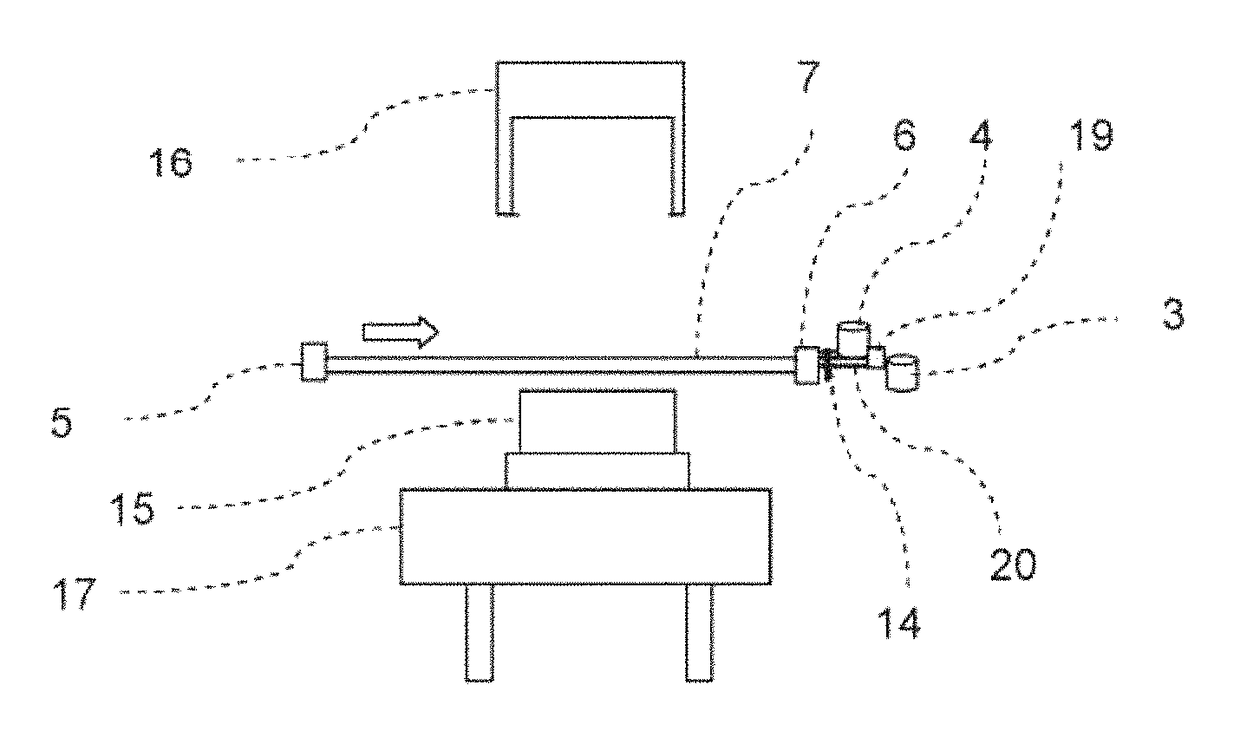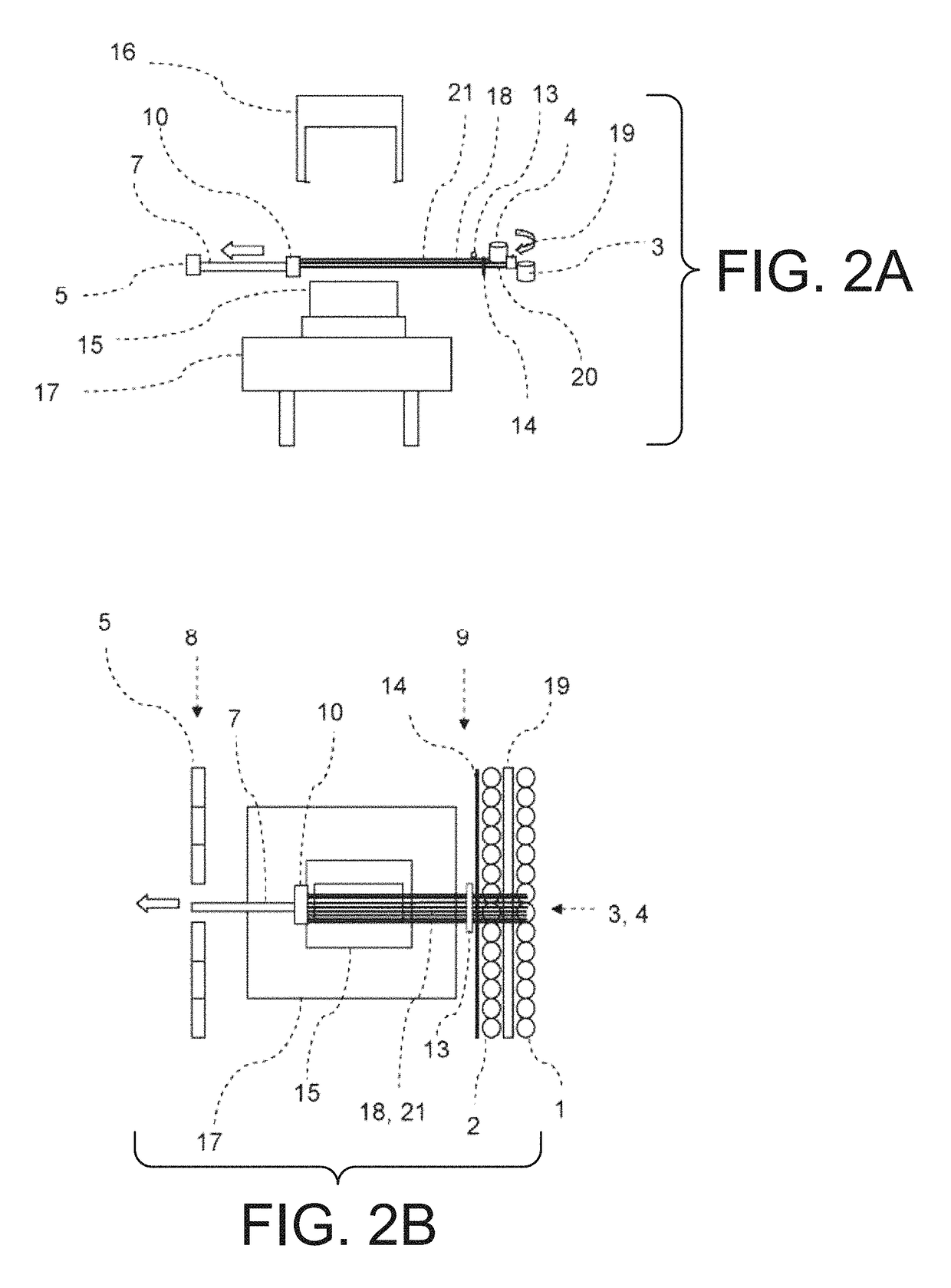Device and method for producing fiber preforms
a technology of preforms and fibers, applied in the field of preforms production devices, can solve the problems of increasing the cost of semi-finished products, increasing the risk of wrinkles, and flatness, and achieve the effect of reducing the amount of expensive fiber material
- Summary
- Abstract
- Description
- Claims
- Application Information
AI Technical Summary
Benefits of technology
Problems solved by technology
Method used
Image
Examples
Embodiment Construction
[0059]In accordance with an embodiment of the device and method according to the present invention, the inventive device is capable of carrying out the following process steps sequentially or partially parallel to one another:[0060]providing threads or rovings and possibly the binder material;[0061]gripping the required threads or rovings and possibly the binder material;[0062]tensioning the required threads or rovings by positioning the grippers accordingly;[0063]first draping over a first molding tool;[0064]second draping with a second molding tool;[0065]fixing the layer of threads or rovings;[0066]severing the threads or rovings on both sides of the molding tools;[0067]rewinding the released and unused threads or rovings;[0068]opening the molding tools;[0069]rotating and / or passing forward a molding tool with the applied layer.
Repetition of the sequence above for placement of additional layers in the same device or in one or a plurality of additional inventive devices, then yield...
PUM
| Property | Measurement | Unit |
|---|---|---|
| angle | aaaaa | aaaaa |
| angle | aaaaa | aaaaa |
| angle | aaaaa | aaaaa |
Abstract
Description
Claims
Application Information
 Login to View More
Login to View More - R&D
- Intellectual Property
- Life Sciences
- Materials
- Tech Scout
- Unparalleled Data Quality
- Higher Quality Content
- 60% Fewer Hallucinations
Browse by: Latest US Patents, China's latest patents, Technical Efficacy Thesaurus, Application Domain, Technology Topic, Popular Technical Reports.
© 2025 PatSnap. All rights reserved.Legal|Privacy policy|Modern Slavery Act Transparency Statement|Sitemap|About US| Contact US: help@patsnap.com



